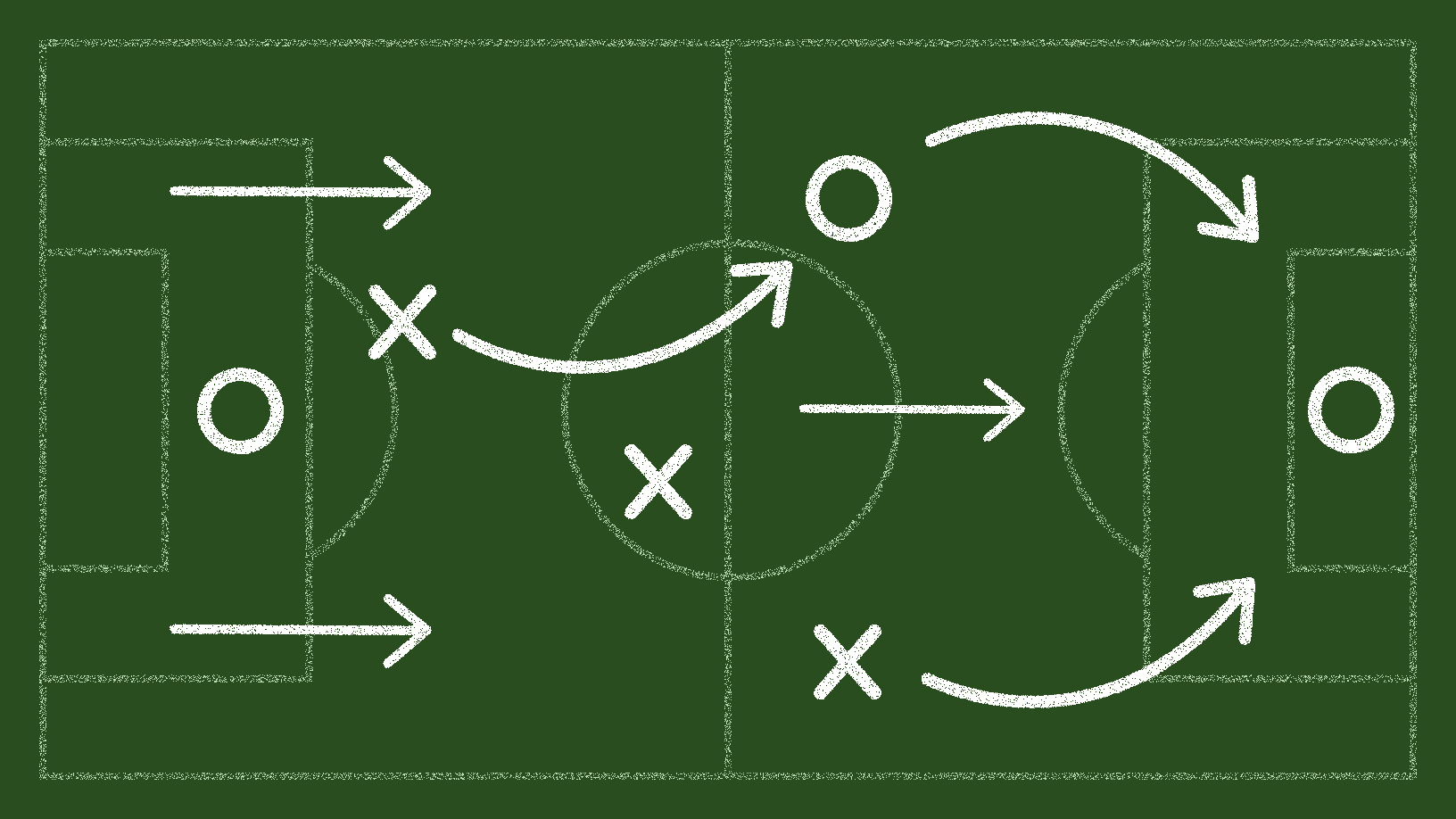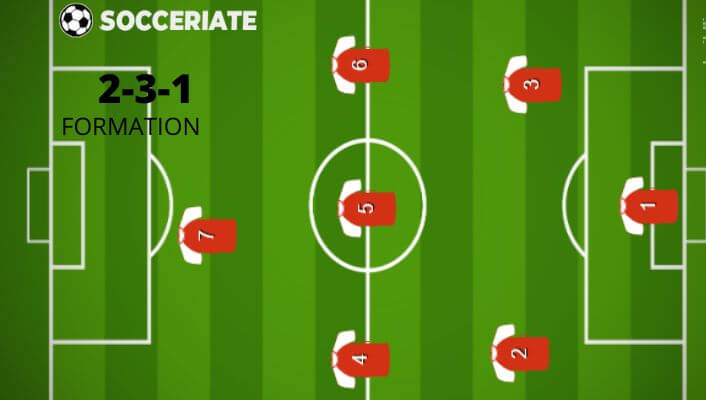“Football Tactics Popular in the USA
Related Articles Football Tactics Popular in the USA
Football Tactics Popular in the USA

Soccer, or football as it is known globally, has seen exponential growth in popularity in the United States over the past few decades. From the establishment of Major League Soccer (MLS) in 1996 to the increasing viewership of European leagues, the American soccer landscape has evolved significantly. This evolution has also led to a greater understanding and appreciation of different tactical approaches in the sport. As the game grows, various tactical philosophies have taken root, influenced by global trends, the unique characteristics of American players, and the specific goals of MLS clubs and national teams.
Historical Context: From Direct Play to Tactical Awareness
In the early days of soccer in the USA, the tactical approach was often characterized by a more direct and physical style of play. Emphasis was placed on athleticism, long balls, and aggressive pressing. This approach was partly due to the influence of American sports culture, which often valued physicality and directness. However, as the sport developed, coaches and players became more tactically aware, drawing inspiration from European and South American styles of play.
The arrival of foreign coaches and players in MLS played a crucial role in this tactical evolution. Coaches like Bob Bradley, who studied European tactics extensively, and players from different footballing backgrounds brought new ideas and approaches to the game. This led to a gradual shift towards more possession-based football, organized defending, and sophisticated attacking patterns.
Popular Tactical Formations in the USA
Several tactical formations have gained popularity in the USA, each with its own strengths and weaknesses. These formations are often adapted and modified to suit the specific players and objectives of a team.
-
4-4-2 Formation: The 4-4-2 is a classic formation that has been used in soccer for decades. It consists of four defenders, four midfielders, and two forwards. In the USA, the 4-4-2 is often employed by teams that prioritize defensive solidity and direct attacking play. The two banks of four provide a compact defensive structure, while the two forwards can pose a threat on the counter-attack or through long balls.
- Strengths: Defensive stability, simplicity, and ease of organization.
- Weaknesses: Can be vulnerable in midfield against more complex formations, may lack creativity in attack.
- Examples: Some MLS teams use a variation of the 4-4-2 when playing away from home or against stronger opponents.
-
4-3-3 Formation: The 4-3-3 is a more attacking formation that has become increasingly popular in modern soccer. It consists of four defenders, three midfielders, and three forwards. In the USA, the 4-3-3 is often used by teams that want to dominate possession and create scoring opportunities through quick passing and movement. The three forwards provide width and depth in attack, while the three midfielders control the tempo of the game.
- Strengths: Attacking prowess, midfield control, and flexibility in attack.
- Weaknesses: Can be vulnerable defensively if the midfield is not disciplined, requires technically gifted players.
- Examples: Some MLS teams, particularly those with talented wingers and creative midfielders, favor the 4-3-3.
-
4-2-3-1 Formation: The 4-2-3-1 is a versatile formation that combines defensive stability with attacking flair. It consists of four defenders, two holding midfielders, three attacking midfielders, and one center forward. In the USA, the 4-2-3-1 is often used by teams that want to control possession, dictate the tempo of the game, and create scoring opportunities through intricate passing and movement. The two holding midfielders provide a solid defensive base, while the three attacking midfielders offer creativity and goal-scoring threat.
- Strengths: Balance between defense and attack, midfield control, and flexibility in attack.
- Weaknesses: Requires disciplined holding midfielders, can be predictable if the attacking midfielders are not creative.
- Examples: Many MLS teams use the 4-2-3-1 as their primary formation, adapting it to suit their specific players and opponents.
-
3-5-2 Formation: The 3-5-2 is an attacking formation that has gained popularity in recent years. It consists of three defenders, five midfielders, and two forwards. In the USA, the 3-5-2 is often used by teams that want to overload the midfield and create scoring opportunities through quick passing and movement. The three defenders provide a solid defensive base, while the five midfielders control the tempo of the game and provide support to the two forwards.
- Strengths: Midfield dominance, attacking threat, and flexibility in attack.
- Weaknesses: Can be vulnerable defensively if the wing-backs are not disciplined, requires technically gifted players.
- Examples: Some MLS teams use the 3-5-2 as a variation, particularly when they want to be more aggressive in attack.

Tactical Trends in MLS
MLS has developed its own unique tactical identity, influenced by a combination of global trends and the specific characteristics of the league. Some of the key tactical trends in MLS include:
- High Pressing and Counter-Pressing: Many MLS teams have adopted a high-pressing style of play, aiming to win the ball back in the opponent’s half and create scoring opportunities through quick transitions. Counter-pressing, or "gegenpressing," is also becoming increasingly popular, with teams immediately pressing the opponent after losing possession to prevent them from launching a counter-attack.
- Possession-Based Football: While direct play is still prevalent in some parts of MLS, there has been a general shift towards more possession-based football. Teams are increasingly focused on controlling the tempo of the game, dictating play, and creating scoring opportunities through intricate passing and movement.
- Attacking Full-Backs: Full-backs have become increasingly important in MLS, with many teams relying on them to provide width and attacking impetus. Full-backs are often encouraged to push forward, overlap with wingers, and deliver crosses into the box.
- Defensive Solidity: Despite the emphasis on attacking football, defensive solidity remains a key priority for many MLS teams. Organized defending, disciplined midfield play, and strong goalkeeping are all essential for success in the league.
Influence of US National Teams
The tactical approaches of the US men’s and women’s national teams have also had a significant impact on the broader soccer landscape in the USA.
- US Men’s National Team (USMNT): Historically, the USMNT has often favored a pragmatic and defensively solid approach, emphasizing hard work, organization, and set-piece prowess. However, under recent coaching regimes, there has been a shift towards a more possession-based and attacking style of play. The USMNT is increasingly focused on developing technically gifted players who can compete with the best in the world.
- US Women’s National Team (USWNT): The USWNT has been a dominant force in women’s soccer for decades, and their tactical approach has evolved over time. While physicality and athleticism have always been important, the USWNT has also emphasized tactical flexibility, intelligent movement, and clinical finishing. The team’s success has inspired countless young players in the USA and helped to raise the overall level of soccer in the country.
Challenges and Future Directions
Despite the progress made in recent years, soccer in the USA still faces several tactical challenges. One of the main challenges is the development of technically gifted players who can compete with the best in the world. The USA has made significant strides in youth development, but there is still work to be done to create a consistent pipeline of talented players.
Another challenge is the integration of different tactical philosophies. MLS is a diverse league with teams from different backgrounds and playing styles. Finding a balance between the directness of American sports culture and the sophistication of European and South American tactics is an ongoing process.
Looking ahead, the future of soccer tactics in the USA is likely to be shaped by several factors. The continued growth of MLS, the increasing influence of global trends, and the development of new coaching methods will all play a role. As the sport continues to evolve, American soccer is likely to develop its own unique tactical identity, blending the best of different approaches to create a style of play that is both effective and entertaining.
In conclusion, football tactics in the USA have undergone a significant transformation over the past few decades. From a more direct and physical style of play, the sport has evolved to incorporate more possession-based football, organized defending, and sophisticated attacking patterns. The influence of global trends, the arrival of foreign coaches and players, and the development of youth academies have all contributed to this evolution. As soccer continues to grow in popularity in the USA, the tactical landscape is likely to become even more diverse and sophisticated.

